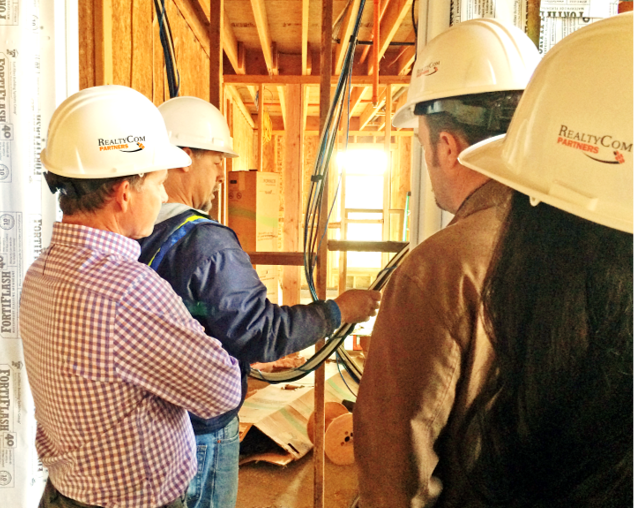By Phil Veletzos
The FCC continues to consider changing current policies related to apartment communities and other multitenant environments. What they adopt will have important impacts to private property rights of Owner-Operators, Managers and Developers of multifamily communities, as they construct and manage telecom facilities, and the Service Providers who deliver broadband services to their assets.
Limiting the Use of Telecom Infrastructure?
Among the issues up for consideration, are rules governing telecom infrastructure and if Owners should be prohibited from the current practice of granting limited use of infrastructure to select Service Providers at a property – either on an “exclusive” or “non-exclusive” basis.
Proponents of change argue that discontinuing the current practice of allowing limiting use contracts will spur competition by allowing many more Providers to use existing infrastructure. How many Providers would depend ultimately on the desires of the resident population. As conceived within one of the Nation’s first such initiatives (San Francisco Article 52) a resident’s express desire for a Service Provider would start a process where that provider, even over the objection of an Owner, could be granted the right to “install the facilities and equipment necessary to provide communication services or use any existing wiring” to reach the Resident’s unit . Although the FCC’s initial Notice of Rulemaking preempted the extent that Article 52 required sharing of “in-use” wiring (wiring that was actively being used by another Provider) it has left open the possibility that their final ruling might allow use of a wire under another Provider’s exclusive control contractually so long as it is not actively being used to deliver data/video services.
This would turn existing rules upside down. Under the current structure, Service Providers and Owners construct different components of a Community’s telecom infrastructure. The Owner will install the conduit system, risers, telecom closets (backboard, electrical, ground), unit materials (media cabinet, wiring, outlets) and negotiate at their own discretion with available Service Providers for access to the property and infrastructure they’ve installed. The Owner and Service Provider(s) of choice then facilitate delivery of Cable, Phone, Internet and Wireless services to the residents.
Telecom Planning Strikes a Necessary Balance Between Available Space and Service Providers – An Argument Against Open Access
RealtyCom’s New Construction Team actively assists Owners/Developers in planning for the number of fiber optic, Cat6, MidroDuct and or coax material running to an apartment unit, the backboard space those providers will need in telecom closets, and conduit pathways back to the right of way. Achieving consistency between the Service Provider access/marketing agreements negotiated and the planned infrastructure (often with a spare pathway for possible future competitors) is an involved process that should result in a well-balanced mix of telecom services, generous complimentary video/data accounts to accommodate resident amenity areas, and economic incentives some of which are tied to Service Provider penetration rates (those funds represent a partial reimbursement for the Owner’s investment in the telecom infrastructure the Service Providers are using).
This system respects infrastructure investments by the Owner, but also, the Service Providers as they spend capital (after execution of an Access Agreement) on electronics and distribution wiring with the building, as well as plant extension to get their network to the property (or on wireless equipment at the rooftop and associated base station). Their decision to invest capital is based on the return they expect to make from subscribers given the likely competition they will face at the property.
Article 52 and other “open access” initiatives will reduce investment in telecom infrastructure as Providers will not be able to predict revenues and Owners will no longer have the ability to rationally limit use of their infrastructure to a select mix of providers that are most beneficial to the community. Moreover, the service will likely suffer as Providers compete for space in over-crowded telecom closets and point the finger at one another when damage or recurring service issues occur.
More is not always better, especially when the Owner has no input as to what company may gain access to critical communication infrastructure the Owner has built within their new development.
Understanding Telecom at Your Property and How RealtyCom Can Help You
The FCC requested comment on this issue from industry participants and a final ruling is expected later this year. To be prepared, RealtyCom and other organizations such as NMHC is encouraging Owners to assess their existing telecom contracts, Service Provider installations and how they impact the available telecom infrastructure on their property including conduits, backboard space, power, home run materials, risers, roof penetrations and other components that may impact the physical capacity of a property to absorb infrastructure of additional Service Providers. In our experience, this information is not the expertise of on-site property management staff, which is why RealtyCom provides contract, physical inspection and detailed reports that can provide this valuable baseline for your properties. Moreover, it will inform your on-site staffs and help them respond to inquiries from new interested Service Providers as to the steps they need to take for appropriate consideration. Contact your client account manager or info@realtycompartners.com with any questions.




